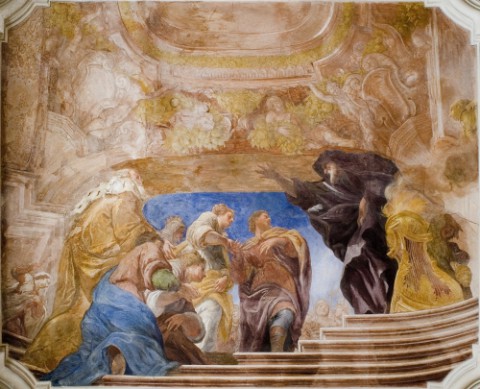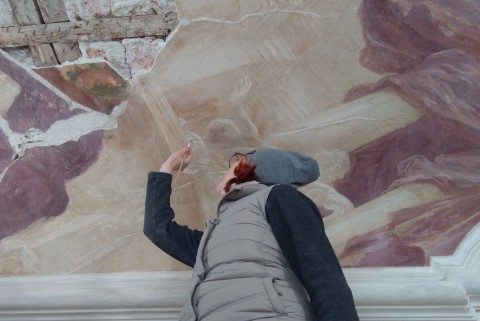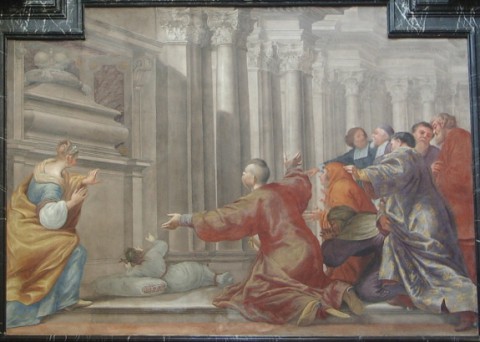Why are Michelangelo Palloni’s paintings so precious?
The decorations of the Garden Galleries on the ground floor of the Wilanów palace are extremely valuable. As part of the current project, they have undergone conservation measures, including the removal of later repainting, strengthening their structure and securing them for the duration of the modernisation work on the upper level of the palace.
It is obvious that at the museum we take care of all the historical monuments and their safety is a priority for us. The entire palace is a priceless site, preserved in its original state, never destroyed or seriously damaged. The decor of the royal suites or the rich collection of art gathered here over the centuries make the Wilanów residence unique.
However, even in such a select group of priceless artefacts, Michelangelo Palloni’s paintings hold a special place. There are at least a few reasons. First, there are practically no Baroque frescoes in palace interiors in the territory of today’s Poland. While many decorations in churches have survived, the same cannot be said for palaces. We are therefore dealing with something unique in the Wilanów palace. Second, the story of “Eros and Psyche” depicted by Palloni is considered to be one of the favourite stories of King Jan III himself. Later authors, especially those from the 19th century, added a legend to this: the king, giving his guests a personal tour and explaining the dramatic story of the protagonists’ love, was reminded of the story of his own feelings for his beloved wife, Marie Casimire. Supposedly, it happened that he would “wipe away tears with the sleeve of his kontusz coat.” We cannot of course verify this, but it is certain that the moving love story of Eros and Psyche was also interpreted in the times of Jan III as a symbolic representation of the journey of the soul (psyche) towards the heavenly homeland, which in turn was a reference to Plato’s ideas, which said that the body remains a prison for the soul, striving for Heavenly Love (Eros). Undoubtedly, therefore, there was plenty to talk about and each “tour” of the gallery was quite an attraction. There is a third reason – the figure of the painter himself. Michelangelo Palloni was an artists the likes of whom rarely appear in the history of art in the Commonwealth. This outstanding painter from Florence brought a breath of Italian art – full of freedom, flawless use or perspective and a great sense of colour – to the lands of the “far north” (today’s Lithuania and Poland). He also knew how to create frescoes, painting directly on wet plaster, which was always a valued skill.
One example of his talent has survived in the Wilanów palace. What is more – it is an extremely interesting story and close to King Jan III’s heart, and he, as we know, is the most important figure in this place. That is why we care for these decorations, this time as part of the “Restoration and protection of the symbol of the Polish cultural heritage – the Museum of King Jan III’s Palace in Wilanów” project, co-financed by the European Union from the funds of the European Regional Development Programme as part of the Operational Programme Infrastructure and Environment.

suggested

Michelangelo Palloni (1642–1711/13)
Born in Campi, near Florence, on the day of Saint Michael the Archangel, 29 September 1642, Michele Arcangelo (Michelangelo) Palloni …

Michelangelo Palloni
Michelangelo Palloni (1637-1711/1713), painter. Born in Tuscany, initially worked in Florence and Rome, and then in Torino, where he executed …

















